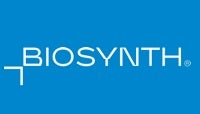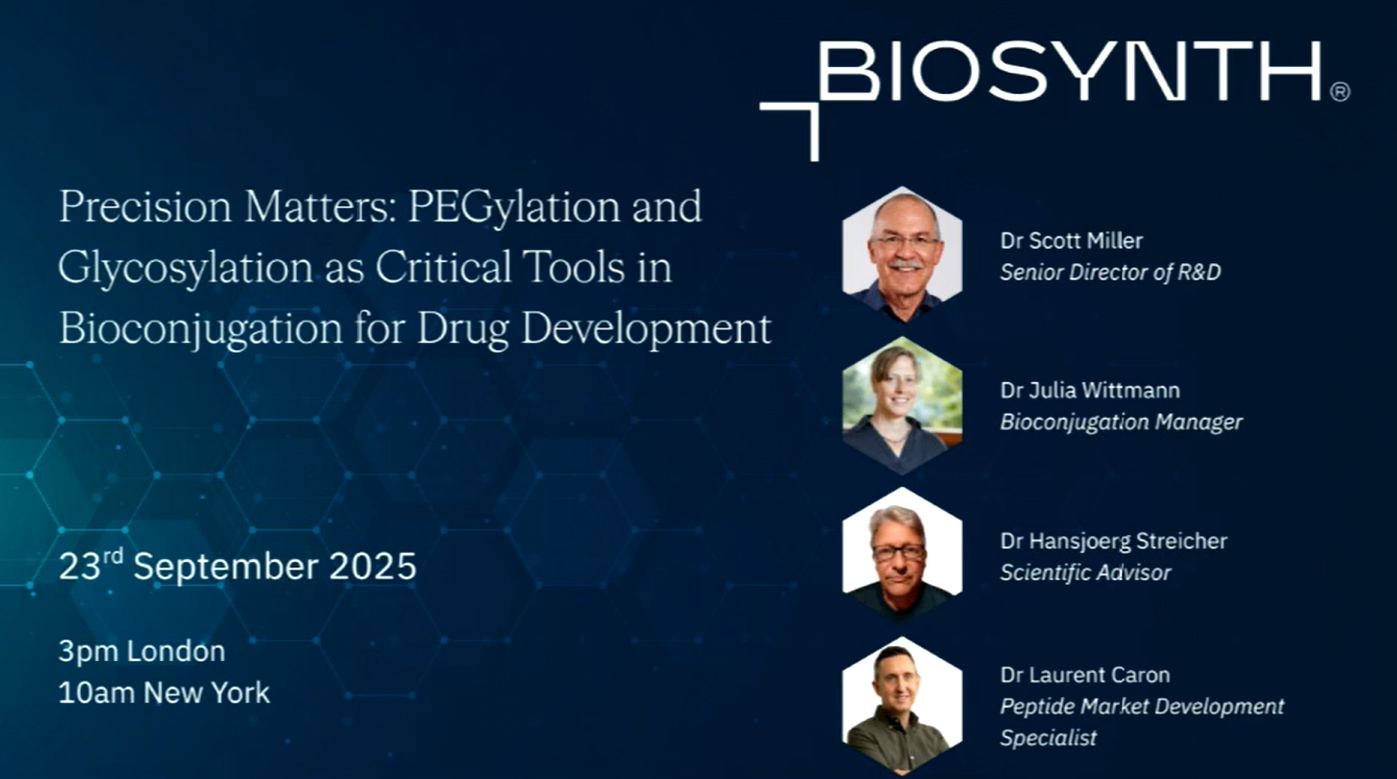
In the fast-paced environment of pharmaceutical innovation, bioconjugation has proved to be a cornerstone technology. By enabling the precise modification of biomolecules, researchers can enhance drug performance, targeting and safety. However, synthesizing complex components and finding efficient ways to link them remains a challenge in drug and vaccine development.
Biosynth, a leading supplier of critical raw materials and services for the life sciences industry, recently hosted an interesting webinar titled “Precision Matters: PEGylation and glycosylation as critical tools for bioconjugation for drug development.” This brought together leading scientists to explore the evolving landscape of bioconjugation, including a deep dive into the chemistry, strategy, and innovation behind PEGylation, glycosylation, and peptide conjugation.

Discover B2B Marketing That Performs
Combine business intelligence and editorial excellence to reach engaged professionals across 36 leading media platforms.
Hosted by Dr Scott Miller, Senior Director of R&D at Biosynth, expert analysis was provided by Biosynth’s Bioconjugation Manager, Dr Julia Wittmann; Scientific Advisor, Dr Hans Streicher; and Peptide Market Development Specialist, Dr Laurent Caron.
Targeted conjugation and PEGylation
Dr Julia Wittmann opened the discussion with an overview of PEGylation—the attachment of polyethylene glycol (PEG) to biomolecules. PEGylation is particularly well-suited for use in the pharmaceutical sector due to its high water solubility, non-toxic, and non-immunogenic properties. It can also be easily synthesized in a wide range of molecular ways.
But why PEGylate biopharmaceuticals at all? Julia explained that peptides and small molecules are often rapidly removed from the body by renal secretion due to their low molecular weight. This means they must be administered frequently and at high doses, which also increases unwanted side effects. One important purpose of PEGylation is to slow renal excretion down by increasing the size of the drug upon attachment of PEG. This can result in an increased half-life in the human body and a significant reduction in side effects.
Dr Wittmann also highlighted the importance of the development of conjugate vaccines, where an antigen by itself induces low or no immune response is conjugated to a highly immunogenic carrier protein. She detailed the conjugation strategies behind linking a peptide to a carrier protein, specifically CRM197, which activates the immune system in the body that then also recognizes the bound antigen, increasing the overall immunogenicity of the conjugate vaccine.
Key challenges in carbohydrate and peptide conjugation
The webinar continues with Dr Hans Streicher, exploring the strategies and challenges of carbohydrate conjugation, emphasizing its role in biological recognition, drug targeting, and novel materials. For example, nanoparticles can be decorated with monosaccharides or polysaccharides to provide new properties.
Dr Streicher re-iterated the importance of conjugate vaccines, specifically glycoconjugate vaccines. He discussed the glycoconjugate vaccine against H. influenza (Hib), where conjugation with the carrier protein hemocyanin was necessary due to the low immunogenicity of the polysaccharide alone. “We want, through conjugation, to combine carbohydrate properties with those of the conjugated moiety.”
The webinar concluded with Dr Laurent Caron, focusing on peptide conjugation. He hailed this era as “the golden age for peptide bioconjugate tools and applications”, exploring established and emerging techniques in peptide conjugation. He highlighted the importance of peptide conjugation in imaging and biosensing applications, as well as in therapeutics.
Dr Caron discussed the complexity of bioconjugation targets and the need for additional modifications. As an example, he showed the use of PTAD (4-phenyl-3H-1,2,4-triazole-3,5(4H)-dione) as a reagent for targeting tyrosine residues, with the capacity for additional modifications when needed. He commented on designing the conjugation economically, from sourcing the reagents through to the conjugation strategies, aligning with Biosynth’s commitment to practical, scalable solutions for complex chemistry challenges.
Expert partner in bioconjugation
The webinar, available to view on demand here, provides an in-depth view on bioconjugation as a powerful tool in drug development. A wide range of advanced strategies are discussed, from targeted conjugation chemistries and conjugate vaccines to peptide and carbohydrate conjugation. Importantly, this highlights the fundamental role of integrated manufacturing and analytical capabilities in transforming these technologies from bench to market.
Biosynth offers bioconjugation services at any stage of the bioconjugate development. They partner from first feasibility studies, through process and analytical method development, to GMP manufacturing. Familiar with a wide variety of conjugation methods, including PEGylation and glycoconjugation, as well as small molecule or peptide coupling, services can be selected individually or as a whole package. Biosynth provide end-to-end solutions in conjugate vaccines and conjugate drugs, activated PEGs, and polymer-based drug delivery excipients from early clinical phase through to late clinical phases and approval.
To find out more, visit www.biosynth.com and watch the webinar on demand here.



